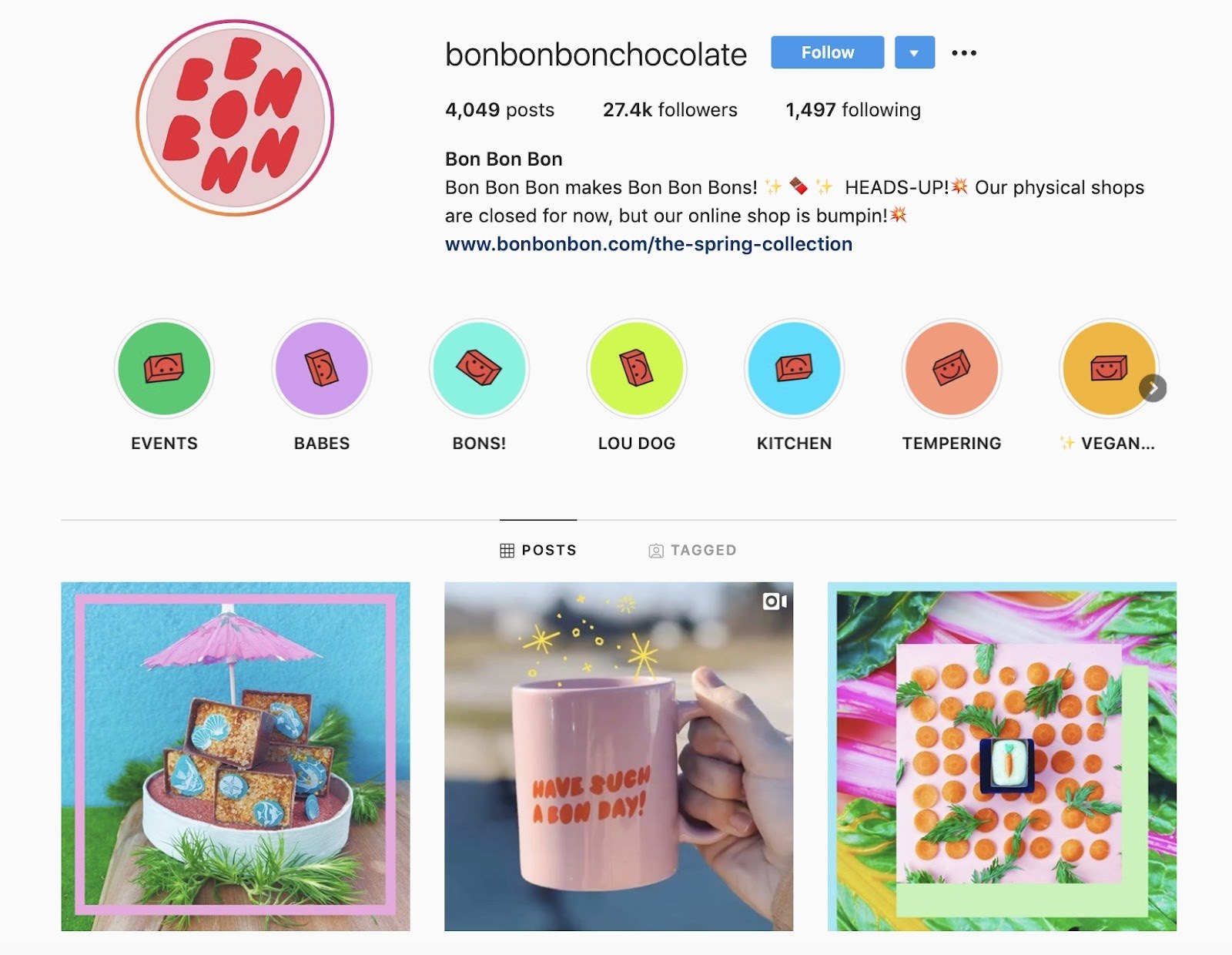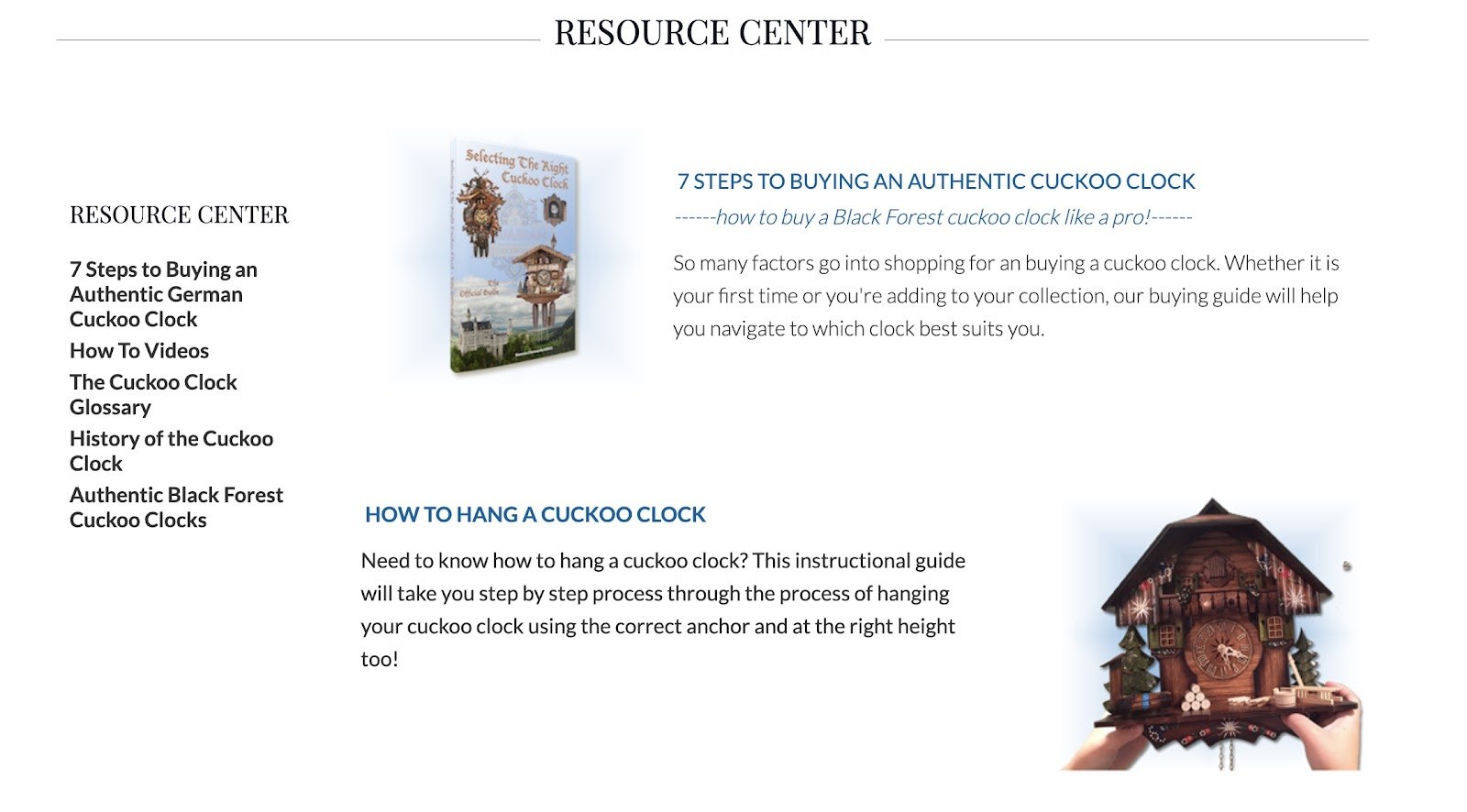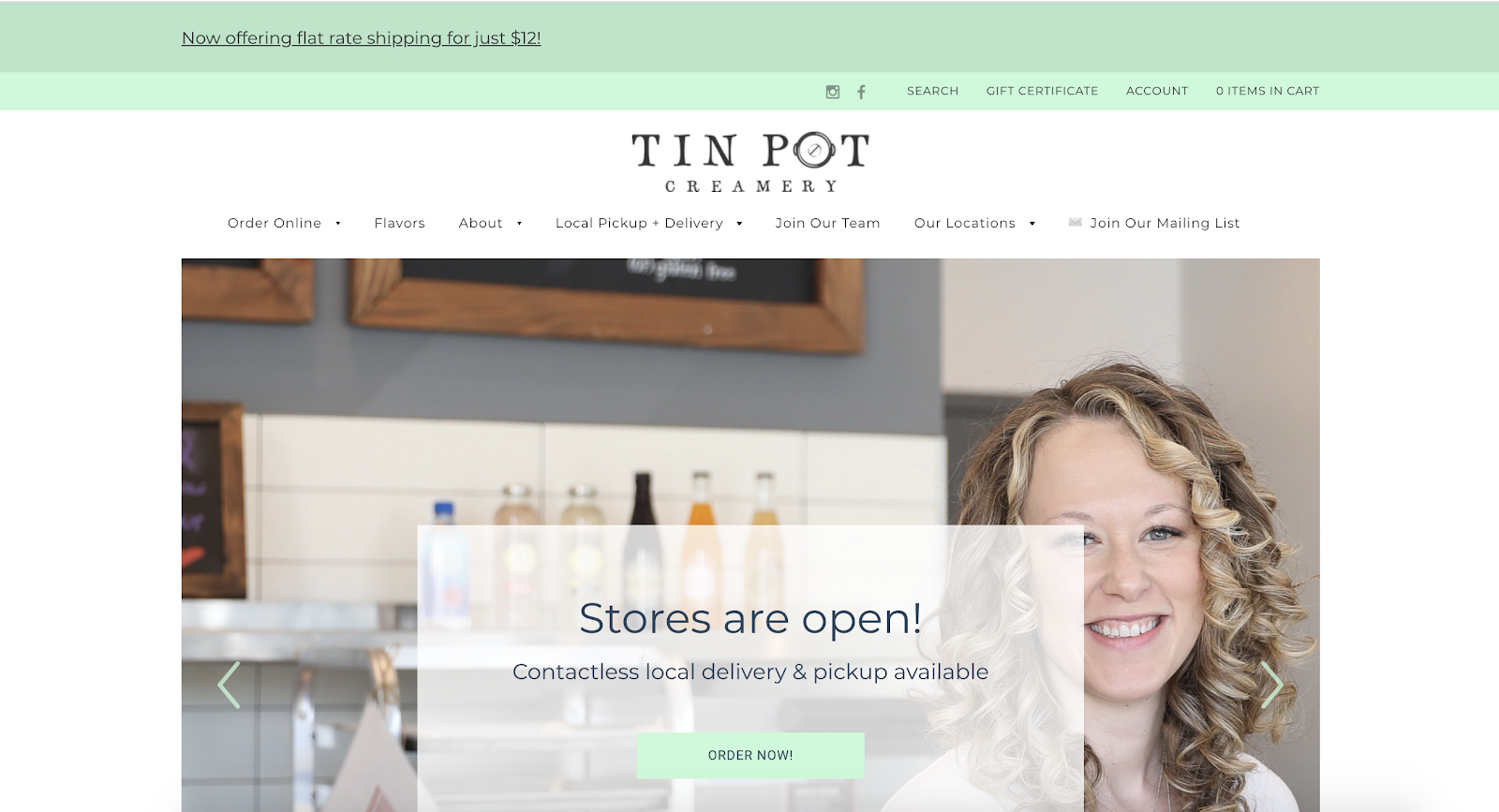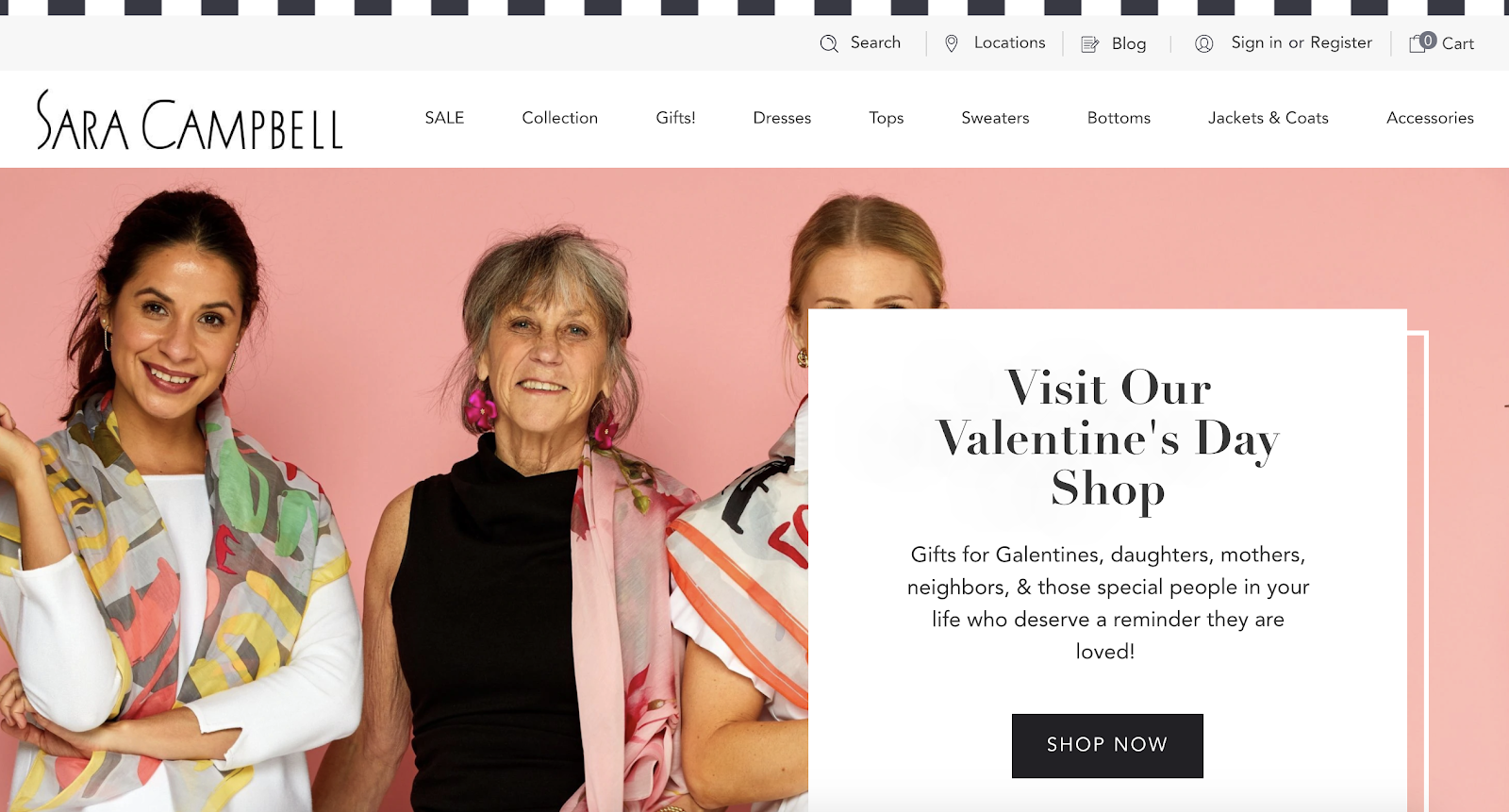- Enterprise
- Essentials
How to Promote Your Online Store: Marketing Strategies to Build a Robust Ecommerce Channel

Increase Your Ecommerce Sales from $1 million to $100 Million
Get a step-by-step checklist to help you build your online store from start to finish.
If you have a thriving offline business, you are no stranger to marketing. However, the strategies for driving traffic to your online store can be a different animal altogether.
With your online store, you’ll be able to reach more prospective customers than ever before — and you’ll have complete control over their shopping experience. But this isn’t an “if you build it, they will come” situation.
In this article, we’ll go over some of the best ways for you to get your new online shop in front of the people who want to buy. We’ll consider not only how to drive traffic to your website, but also how to integrate marketing between your online store and your offline businesses to make the most of all your channels.
Get expert insights on the go with our biweekly audio series where global thought leaders discuss all things ecommerce — from industry news and trends to growth strategies and success stories.
Driving Traffic to Your Online Store
You can think about marketing your ecommerce site in terms of three main audiences:
- People who have shopped with you before or at least know about your store
- People who are looking for the kind of product that you offer
- People who would want the product that you offer if they knew about it
While this is, admittedly, a simplistic way to think about it, this three-pronged approach can help you think about your different marketing activities and how to divide your time and budget.
For your first audience, people who know about you, you should have a direct line to them — either through email communications, content marketing or via social media. You can communicate with them directly and for “free” (not counting any budget you might spend on tools).
For your second audience, you’ll need to find ways for them to discover the products you have that meet their needs. This can involve search engine optimization (SEO), content creation (like blogging) and search engine marketing.
And for your third audience, you’ll need to think in terms of brand awareness. Are you offering a fix for a problem they don’t know about yet? Or is your target audience using a competitor’s solution? The answers will have an impact on how you approach your marketing.
Once your store is set up, you can start promoting your site to your existing customer base. We’ll also talk about how to make your website easy to find for new customers interested in your product and spend your advertising budget wisely to put your message in front of high-intent traffic.
10 Marketing Tactics to Promote Your Online Store
From marketing to existing customers to acquiring new ones, let’s look at eight tactics you can use to drive traffic to your new online store.
1. Utilize (and keep building) your email list.
Even in a brick-and-mortar store, it’s important to have a strong email marketing strategy. Collect as many email addresses as you can — customers, prospective customers, people interested in your events, etc. When you launch, you’ll be able to send an email to all of those people letting them know that they can visit your store online.
This can be a good time to consider offering a promotion to those on your email list, or even a referral discount to encourage customers to share your site with friends and family.
Email continues to be one of the most effective marketing tools in the ecommerce toolbox, so make sure that you keep collecting email addresses on your site. Some brands use pop-up boxes to prompt users to enter their email addresses in return for a small promotion, like 15% off their first purchase, or free shipping.
You should also make sure you’re keeping a steady flow of communication with your email list. Develop a regular email cadence and include promotions, new content, product launches and other news that can encourage customers to visit your site.
2. Boost your organic social presence.
With your online business, you’ll want to take every opportunity to boost your digital engagement. One of the easiest and most effective ways is to give a little extra love to your social media channels, and make sure they’re stocked with vibrant images and engaging videos.
We love the way Bon Bon Bon uses their Instagram channel to showcase these gorgeous images of their product. Other great ways to leverage social media are hosting giveaways, working with bloggers who are active in your niche and using appropriate hashtags.

If you already have a pretty solid presence on social channels with a core audience, this is the time to build on that. Increase your post frequency and invest a bit more time in creating rich visual content and short, engaging videos. Boosting engagement with your followers increases the chance for brand awareness with their followers. Encourage sharing, and incorporate user-generated content.
If your social media presence needs some work, now’s the time.You don’t have to be everywhere. Make sure you have a presence on the channels that are appropriate for your target customer and put your energy there.
3. Optimize your site for SEO.
Search engine optimization (SEO) encompasses many things, and trying to optimize can lead you down a deep, deep rabbit hole. Here are a few things to keep in mind if you’re just starting out.
Put yourself in the mind of your user — how does your target audience talk about your products, and what do they want to know?
Pay attention to on-page content. On-page content refers to product titles and descriptions, images, any blogs or other content you might have, etc. You want to make sure that content naturally uses language your customers might use when searching for related products and answers their questions.
Meta tags are important as well. Title tags, which are like headlines for a search engine, help the search engine figure out what each page is about. Each page of your website should have its own unique title tag. Meta descriptions are short summaries of each page. When your site shows up on a search engine results page, users will see your title tag and meta description before anything else.
4. Create interesting, useful content.
Creating great content for people looking to buy your product is a great way to bring traffic to your site and provide helpful information that positions your brand as an authoritative voice in your vertical.
When Bavarian Clockworks owner Robert Ellis launched his ecommerce storefront, he set out to build robust resource pages to help buyers make informed decisions about his products — authentic German cuckoo clocks.
“Our user guides are the nucleus of the website,” Ellis says. “They provide huge value to potential customers, and it’s also fantastic for SEO.”

5. Try out Google Ads.
Using Google Ads for search engine marketing gives you an opportunity to bid on keywords, so that you can show up first in search engine results pages. Getting the coveted “top spot” is what search engine optimization is all about — but, a head’s up, Google Ads will still show up first.
Search engine marketing is a great way to advertise your website because it doesn’t require any design and can be very effective in driving new traffic. You’ll get results in real time and can adjust your campaign strategies based on performance as you go.
6. Advertise on social platforms.
Social media is a great place to focus ad spending because you know people are spending time on social platforms. If you were going to buy a billboard, which road would be the best one to put it on? Think about social media advertising like this, too.
If your audience spends a lot of time on Instagram but not Twitter, you’ll want to focus your spending on Instagram.
You can use photos and videos in your ads, but start small. A photo ad can be a great way to get your product in front of new people. Try simple, engaging imagery of your product in use and adjust your tactics based on how well it performs in the first couple of weeks.
7. Partner with complementary brands.
Create partnerships with other brands to cross-promote. Find a business with a similar target audience, but a complementary product. That way, each business partner is reaching a whole new yet relevant audience. For example, if you sell outdoor gear, a relevant partnership could be with a brand focused on hiking shoes.
Actual methods for cross-promotion can vary, and there are ways you can do it at every level of the funnel. Top-of-funnel activities can be things like co-sponsoring an outdoor living podcast or blog. Depending on the time of year, a co-branded gift guide could be a great initiative. Or you could even do down-funnel promotions like offering a discount on one product with the purchase of another.
8. Participate in online events and discussions.
As online communication and events surge, there may be opportunities to increase brand awareness with target communities. Leverage your expertise by participating in webinars or virtual conferences to get the word out about your business.
Find any opportunities for virtual malls and marketplaces and take advantage of them.
9. Consider using influencer marketing.
Influencers are people who have large online audiences, and have the power to “influence” that audience’s purchasing behavior.
Working with the right influencer can get your product in front of a huge number of potential customers, increasing your brand awareness. To make the best use of influencer marketing, make sure your targeted influencer’s following aligns with your target audience, and that their values align with your brand.
Common influencer marketing tactics include an influencer writing a blog post about your product, posting social media content reviewing or demonstrating your product or talking about your product at an event.
10. Leverage your offline store(s).
If your brick-and-mortar business has great name recognition and a loyal following, you can use your in-person time with your customers to help drive traffic to your new online store.
For example, you can use non-intrusive ways to help customers stay engaged with your brand even after they leave the store. This can include asking them to sign up for your email list at checkout, letting them know about our customer loyalty program if you have one and drawing attention to promotions you’re running on social media that they might want to follow.
Consider offering flyers with promotion codes they can share with friends and family who might not live near your physical store. Your in-person customers can be your greatest evangelists and can help spread your message far and wide.
Offline to Online Marketing Success Stories
These businesses who were traditionally offline found success in integrating their online presence to create a cross-channel marketing strategy.
1. Tin Pot Creamery.

California-based scoop shop Tin Pot Creamery was making a strong impression on customers with their brick-and-mortar locations where they were making the bulk of their sales. But when the COVID pandemic forced their doors closed, they needed to breathe new life into their online marketing.
For Becky Sunseri, Founder and Chief Creative Officer of Tin Pot Creamery shares what worked for them after upgrading their ecommerce platform to BigCommerce:
“Before COVID-19, we told our brand story in our scoop shops and through our product packaging. Every time I saw our website, I just knew it didn’t capture what I wanted to communicate about our brand. I quickly went from feeling embarrassed about our website to proud of it.”
Changing ecommerce platforms made it easier for Sunseri to rate the effectiveness of Tin Pot’s shift to online marketing and advertising. An ecommerce-enabled website provided the opportunity to reach a larger audience outside the scoop shops through social media, email lists and a more “giftable” online presence.
“We started taking orders right after our website went up, and now it’s easy to see where orders are coming from and whether or not our ad spend is actually working for us,” Sunseri said. “It’s also changed how we think about marketing and advertising and allowed us to make a more intentional first impression with our customers — wherever they live, since we’re no longer limited to our local market.”
2. Sara Campbell.

This Boston-based clothing company had no online presence at all until 2020, despite their thriving offline brand. When they needed to create and launch an online store quickly when, like Tin Pot Creamery, their physical stores were shuttered, they turned to BigCommerce.
In addition to providing a new sales channel, they also realized they had new avenues for marketing on their online store. Courtney Harris, Director of Operations at Sara Campbell, describes how they began advertising on social media to reach new customers.
“Our first priority has been engaging with our customers through new and improved marketing campaigns and promotions.”
“BigCommerce has helped us with executing these promotions and allowing our online shoppers to complete a purchase while having an easy, excellent experience.”
Conclusion
Selling online for the first time or upleveling your online presence to become a vital retail channel can seem daunting, but it’s more than doable — especially if you take it one step at a time.
Stay consistent, be patient, and don’t let yourself get overwhelmed by doing too much at once. Choose a few of the marketing tactics here that you think will bring the most reward for your business. Then, tweak and adjust as you start to see results.
How to Promote an Online Store FAQ
How do I decide which marketing strategies make the most sense for my online store?
There are many ways to use marketing to promote your business; however, which strategies you should employ will depend on your business and your goals. Here are some questions to ask: does your offline brand provide you a strong email list? If so, maybe start by getting the word out that way. Does the audience for your products flock to certain social media platforms? If so, those channels would be a good place to focus on. Is your main goal to reach new customers who are currently unaware of your brand? You may need to boost your organic traffic based on an SEO and content strategy.
How do I gain more organic traffic to my ecommerce website?
The key to driving organic traffic to your website is SEO. You need to make your site easy to find for people who aren’t familiar with your brand, but who are in need of your products. Make sure all the content on your website follows SEO best practices and consider producing additional content as part of a content marketing strategy to reach new customers.
What SEO best practices will help my ecommerce business?
Overall, your SEO strategy should encompass all of the following: keyword research, site architecture, on-page and technical SEO, content marketing, link building and some form of success measurement. While it can be tempting when starting out with SEO to try to stuff key words into everything, make sure you’re writing for humans as well. Think about what people who might want your products are searching for. Let that inform the key words you use in your content. Make sure the meta tags, descriptions and URLs provide an accurate description of what the user will actually find on the page.
How do I find influencers to talk about my brand?
The best influencer marketing strategy is genuine. Therefore, the best way to find people who can speak authentically about your brand is to search for those who are already talking about it or who are at least experts in your niche. Research content creators who have a following specifically related to your target industry and audience.
How can I measure the effectiveness of my marketing campaigns?
Before you launch any new marketing campaign you first need to figure out what your goal for the campaign is. What KPIs (key performance indicators) will let you know if you are successful? Is your goal to increase traffic? To improve your conversion rate? To increase revenue? Once you have a set goal, you can measure the success of your marketing campaign against that goal to determine its effectiveness. Make sure you have structured the campaign in such a way that you can determine attribution.
What social media platforms should I market my online store on?
This is a question that can be answered with another question: what social media platforms are my target audience on? Do market research and create personas if you aren’t sure about your target audience’s preferences.
How do I encourage more people to review my products?
User-generated content and product reviews are incredibly important. Because shoppers can’t see and feel the products in person, they rely on third parties to give their opinions before making a purchase online, particularly if they’ve never shopped with you before. You can encourage customers to review your products by creating and automating the process of asking for reviews and following up. Make it as easy as possible for customers to leave reviews such as by providing a template with questions to answer.





